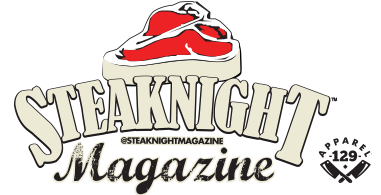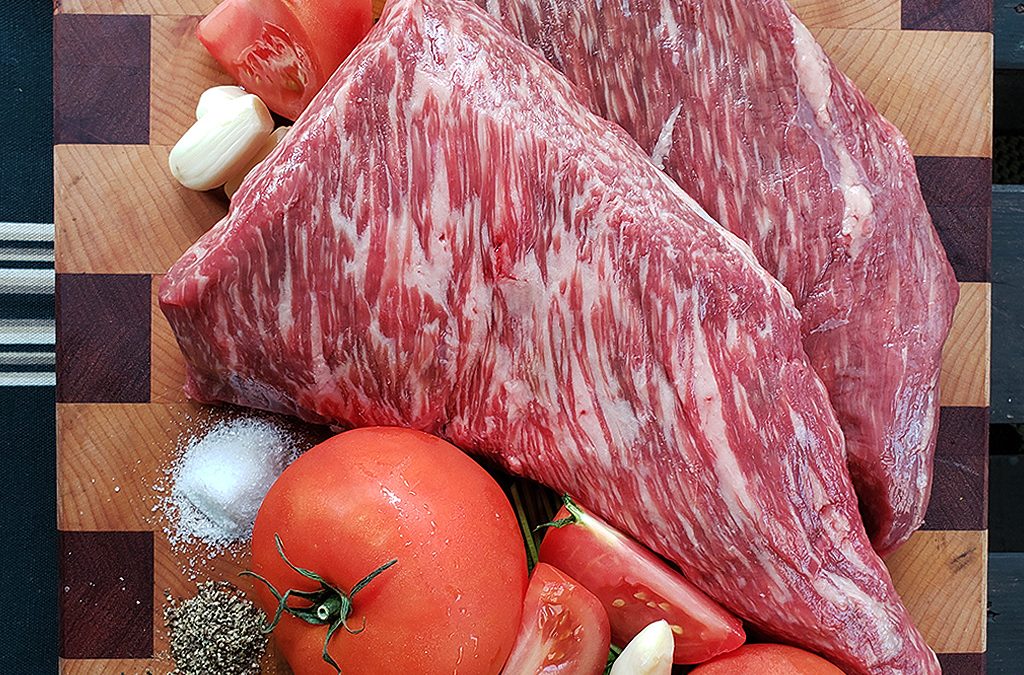If you’ve tried Wagyu beef, you know it’s a real luxury to eat. Wagyu is deliciously marbled with fat, tender yet flavorful—and centuries of tradition, generations of cattle breeding, and a whole lot of rules and regulations are in place to keep it that way. Despite all this, the topic is rife with confusion, at least partly because of unscrupulous operators who want to jack up the price of the steak you’re eating.
The real stuff, though, is a stunning special occasion treat. Here’s how to tell the difference, and why you should.
What is Wagyu?
Despite its fancy reputation, the name is actually quite humble: Wagyu just means “Japanese cow,” but not all beef from Japan is Wagyu. In order to count, it has to come from one of four breeds: black, brown (usually called red), shorthorn, and polled (or hornless). Black is by far the most common, though you’ll also occasionally see meat from red cows, and the latter two aren’t available at all in the United States.
The distinctive thing about Wagyu meat is how well-marbled it is, meaning the fat is evenly and generously distributed. Also, this fat melts at slightly below body temperature, so you’ll have an actual melt-in-your-mouth steak.
Wagyu is not only from Japan
Japan has rigid guidelines for Wagyu before and after it’s harvested—remember, only beef from certain breeds even qualifies. The meat is graded on marbling, color, and other factors on a one to five scale, five being the highest quality. (For comparison, Prime, the highest grade the USDA grades, is a four on the Japanese scale.) The imported Wagyu beef you find in the U.S. is typically a four or five, which is why it’s normally quite expensive—at least $80 for a four-ounce portion.
Ranchers elsewhere in the world, including Australia and America, raise Wagyu cattle too. In America, according to USDA regulations, meat from cattle can be less than 50 percent Wagyu to be labeled as such. Often, they’re crossed with Angus cattle to make them better-suited to conditions here. (Sometimes people refer to these crosses as Wangus!) This meat is often less well-marbled than Japanese steaks, but it’s still a luxurious variety of meat—and a domestic Wagyu typically costs about half of what an imported one would.
What about Kobe?
Kobe steak is a particularly prized variety of Wagyu, and, courtesy of a special regulating board, there are very precise rules on what meat qualifies. To start, it has to be from Hyogo Prefecture, a region in Japan, and it has to hit certain weight, color, and marbling guidelines, so not that many cattle from that particular region even qualify.
Kobe is supposed to be wonderful, but you’ll have to work really hard to try it. Only eight restaurants in the U.S. are allowed to serve it, and none is available for retail sale. Time to book a trip to Japan?
Sniffing out fakes
It’s hard to verify if a steak is truly Wagyu, and it commands a high price—which means the label attracts some shady operators. So how do you save yourself from a costly mis-steak?
To start, give it a good look: raw, a Wagyu steak is so thoroughly marbled it looks pink instead of bright red. The fat shows as little dots of white distributed throughout the muscle. Buy from a reputable butcher (or eat at a well-known restaurant), and ask questions—usually, if the meat is imported, the vendor or restaurant can tell you what prefecture it’s from. One more tell: imported Wagyu beef is always boneless.
American Wagyu is trickier. A cow doesn’t have to be full-blood Wagyu for a steak to be labeled as Wagyu, so it will be well-marbled, but not as distinctively so as an imported steak. Again, buy from a reputable place, and ask questions. And if a place says they’re selling Kobe beef, run. At best, they don’t understand what they’re talking about. At worst, they’re actively deceiving people, so they are not to be trusted.
It’s surprisingly healthy
After the bad news about food fraud, here’s some good news: All the fat in Wagyu beef means it’s actually better for you. How is that possible? Wagyu is high in a compound called oleic acid, which gives it a higher proportion of monounsaturated fatty acids—otherwise known as the good kind of fat, which does not increase your cholesterol.
Cook it correctly
If you’re lucky enough to get a Wagyu steak at the store, make the most of it. You’ll need a smaller portion than you would for a classic American steak because it’s so rich. Be sure to bring it to room temperature before you cook it. The meat cooks quickly because of the high fat content, and you don’t want the outside to burn before the inside is cooked. Imported cuts are better suited to the stovetop than the grill, because the rendering fat can light on fire very easily. Season it simply, to better appreciate that flavor, and enjoy!


